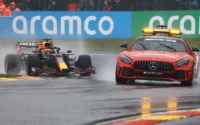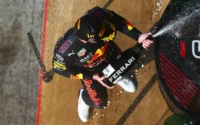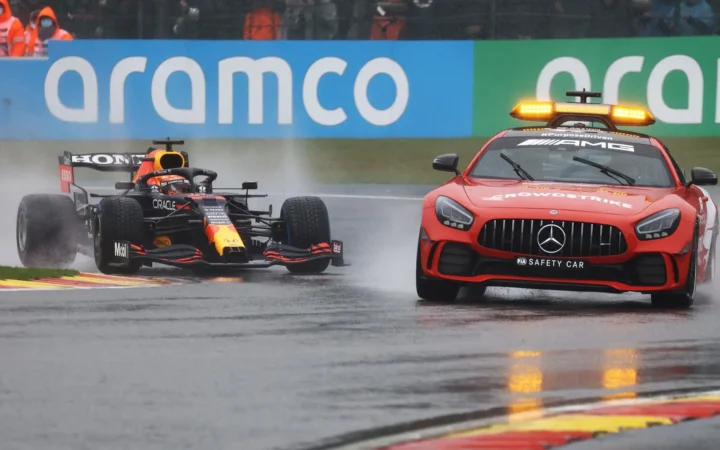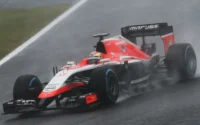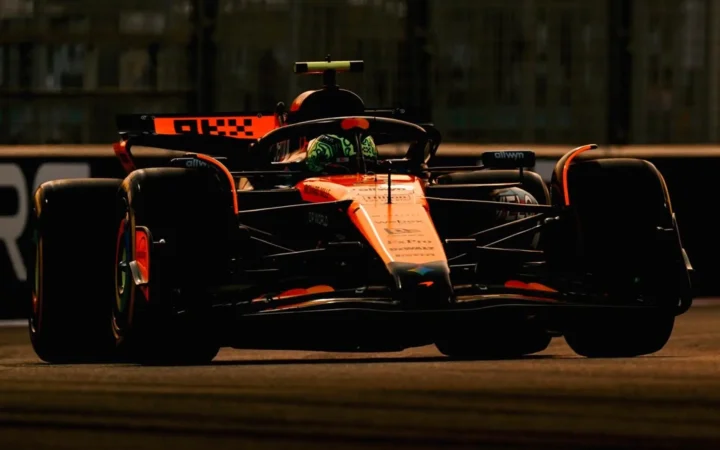Known as the 90% Rule, this regulation determines whether an F1 driver is officially classified in the final Grand Prix results, even if they don’t finish the full race distance.
What To Know?
- How It Works: To be classified, a driver must complete at least 90% of the winner’s race distance — rounded down to the nearest whole number of laps.
- Points Eligibility: Only classified drivers are eligible to score points. If a driver retires or crashes out before hitting 90%, they get zero, no matter their position.
- Official Results Matter: The FIA publishes the final race classification post-race, and only classified drivers appear — a crucial distinction in race history and championship scoring.
You might assume that to finish and earn points, you must cross the finish line after all laps have been completed. The 90% rule allows a driver who retires late in the race to be still awarded points, or, just as notably, for a driver to lose out on scoring if they retire too soon.
Let’s explore what the 90% Rule actually means, how it impacts race classification and points, and why this subtle rule can make or break a championship challenge.
What Is the 90% Rule?
The 90% Rule in Formula 1 states:
“To be officially classified in the race results, a driver must complete at least 90% of the distance covered by the winner.”
If a driver meets this threshold—even if they retire before the chequered flag—they are considered a classified finisher and are eligible for points if they place in the top 10. If they fall short of the 90% mark, they are not classified and cannot score any points, regardless of their track position when they stopped.
For example, If the race winner completes 70 laps, any driver who completes at least 63 laps (70 × 0.9 = 63) is eligible to be classified. Even if they retired after lap 63, they could still appear in the official race results.
Why the 90% Rule Exists
As in any motorsports series, F1 races can be chaotic. Mechanical failures, crashes, and unpredictable weather regularly cut races short for drivers. But not all retirements are equal, and that’s where the 90% rule brings fairness.
It ensures that drivers who complete the majority of the race are still rewarded for their on-track performance. Suppose a driver retires on the last lap while in second place; it wouldn’t make sense to strip them of their hard-earned points simply because they didn’t cross the finish line. The 90% threshold makes sure that drivers who followed the lead driver home (within the threshold) in a Grand Prix are recognised in the results.
It also prevents drivers who only completed a small fraction of the race from being unfairly ranked above others simply because the field suffered a high number of retirements.
When It’s Made a Difference
Although rare, there have been instances where the 90% rule has had a significant impact.
In the early seasons of F1 History, before the rule was strictly enforced, some cars were classified despite being many laps behind the leader. The introduction and consistent application of the 90% rule has brought much-needed structure to race results.
1966 Belgian Grand Prix
In a famously attritional race at Spa, John Surtees won after completing 28 laps. Guy Ligier, who had completed 24 laps (just over 85% of the distance), was running in 6th place when the race ended. However, since he hadn’t completed 90% of the winner’s distance, he was not classified, and no points were awarded for that position. The same happened to Dan Gurney, who was just behind Ligier on 23 laps.
This is an example of how, despite a high number of retirements, drivers outside the 90% window were excluded from the points tally.
What Happens When Fewer Than 10 Drivers Are Classified?
Sometimes, only a handful of drivers cross the 90% threshold, especially in chaotic, wet, or crash-filled races.
When this happens:
- Points are only awarded to those classified in the top 10.
- If fewer than 10 drivers are classified, the remaining points are not awarded to anyone.
Example Scenario:
- Hakkinen – 100 laps – Points
- Schumacher – 100 laps – Points
- Trulli – 98 laps – Points
- Alesi – 80 laps – No Points
- Coulthard – 72 laps – No Points
- Irvine – 65 laps – No Points
Only Hakkinen, Schumacher, and Trulli would be classified and eligible for points. The rest did not complete 90% of the winner’s distance (90 laps), so they receive no points, even though they placed 4th, 5th, and 6th in running order.
Where the Rule Gets Tricky: Retirement vs. Disqualification
One key misunderstanding among newer fans is the idea that a driver who retires automatically forfeits classification. This is not always true.
If a driver retires on the final lap, they may still:
- Be classified
- Receive points (if within the top 10)
- Be shown in the race results ahead of running drivers who completed fewer laps
This is why you’ll often hear commentators say, “He’ll be classified despite the DNF.”
The 90% Rule vs. the 75% Rule
It’s easy to confuse the 90% Rule (individual classification) with the 75% Rule (overall race distance for full points), but they serve different purposes:
| Rule | What It Determines | Applies To |
|---|---|---|
| 90% Rule | Whether a driver is classified in the race and eligible for points | Individual drivers |
| 75% Rule | Whether full points are awarded in shortened races | Entire race |
Formula One History Recommends
Classification and Constructor Points
Every point matters in both the Drivers’ and Constructors’ Championships. Since team totals are calculated by adding up both drivers’ points, losing classification due to a 90% loss can affect the entire team’s season.
If a driver in P8 retires one lap before reaching 90% distance, they miss out on 4 points — and their constructor loses them too. That could be the difference between finishing 6th or 7th in the Constructors’ standings, which translates to millions in prize money.
Formula One History Recommends
The Scoring System From 2019 Onwards
| Position | Points Scored |
|---|---|
| 1st place | 25 points |
| 2nd place | 18 points |
| 3rd place | 15 points |
| 4th place | 12 points |
| 5th place | 10 points |
| 6th place | 8 points |
| 7th place | 6 points |
| 8th place | 4 points |
| 9th place | 2 points |
| 10th place | 1 point |
| Fastest Lap | 1 point (In October 2024, the FIA announced the removal of the point for fastest lap from the 2025 season onwards) |
| 11th place onwards | No points |
How the 90% Rule Fits in Modern F1
In today’s modern era of improved reliability and fewer retirements, the 90% rule is invoked less frequently, but it remains a key F1 regulation.
The rule came into play most recently at the 2020 Tuscan Grand Prix. In an era of sophisticated race strategy from the pit wall and fine winning margins, the 90% rule does more than fill a regulatory gap — it:
- Ensures legitimacy in points-scoring
- Prevents gaming the system with early retirements
- Encourages teams to keep running, to hit that 90% mark
Drivers and teams know that completing one more lap might be the difference between going home with 8 points or nothing at all.
For more F1 Terms, check out our F1 Glossary, covering everything from DRS and G-force to oversteer, slipstreaming, tyre warmers, and turbulence. This guide offers clear explanations of the most frequently used F1 terms. You’ll be speaking the language of Formula 1 like a seasoned fan in no time.
Seen in:


